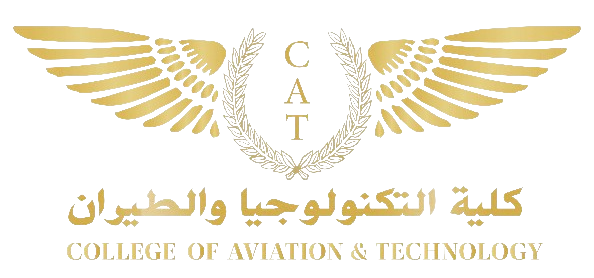Qualification on basic subjects for each category or subcategory of license must be in accordance with the following table. Applicable subjects are indicated by an X.
Subject modules | A or B1 aeroplane with: | B2 | |
Turbine engine(s) | Piston engine(s) | Avionics | |
1 Mathematics | X | X | X |
2 Physics | X | X | X |
3 Electrical fundamentals | X | X | X |
4 Electronic fundamentals | X | X | X |
5 Digital techniques electronic instrument systems | X | X | X |
6 Materials and hardware | X | X | X |
7 Maintenance practices | X | X | X |
8 Basic aerodynamics | X | X | X |
9 Human factors | X | X | X |
10 Aviation legislation | X | X | X |
11 Aeroplane aerodynamics, structures and systems | X | X | |
12 Helicopter aerodynamics, structures and systems | |||
13 Aircraft structures and systems | X | ||
14 Propulsion —avionic systems | X | ||
15 Gas turbine engine | X | ||
16 Piston engine | X | ||
17 Propeller | X | X | |
The purpose of this module is to provide training in mathematics covering, arithmetic, algebra, and geometry as required for employment as professional technicians.
Module 2 Physics
The purpose of this module is to provide training in Physics covering, Particularly Matter, Mechanics, Thermodynamics, Optics, and Wave Motion and Sound, which are all foundation concepts in aerospace technology and engineering.
Module 3 Electrical fundamentals
The purpose of this module is to provide basic knowledge in electrical fundamentals covering, electron theory, static electricity and conduction, electrical terminology, electricity generation, DC sources and circuits, resistance, power, capacitance, magnetism, inductance, DC motors and generators, AC theory, transformers, Filters, and AC generators and motors. Knowledge in these areas should support competency-based training for paraprofessional technicians.
Module 4 Electronic fundamentals
The purpose of this module is to provide underpinning knowledge in electronic fundamentals that covering electronic devices, integrated circuits, printed circuit boards and servomechanisms. Knowledge in these areas should support competency- based training for paraprofessional technicians.
Module 5 Digital techniques electronic instrument systems
The purpose of this module is to provide training in the field of digital techniques covering, electronic instrument system, numbering systems, data conversion, data buses, logic circuits, basic computer structures, microprocessors, integrated circuits, multiplexing, fiber optics, electronic displays, electrostatic sensitive devices, electromagnetic environment, and typical electronic/digital aircraft systems.
Module 6 Materials and hardware
The purpose of this module is to provide basic competency-based training on aircraft materials,
corrosion, and aircraft hardware such as fasteners, pipes and unions, springs, bearings, transmissions, control cables, and electrical cables and connectors.
Module 7 Maintenance practices
The purpose of this module is to provide competency-based training on aircraft maintenance practices in a simulated aerospace industry environment covering safety precautions for the aircraft and workshop, workshop practices, tools, avionic general test equipment, engineering drawings/diagrams/standards, fits and clearances, electrical wiring interconnection system, riveting, pipes and hoses, springs, bearings, transmissions, control cables, material handling, welding, aircraft weight and balance, aircraft handling and storage, disassembly and assembly, inspection techniques, abnormal events, and maintenance procedures.
Module 8 Basic aerodynamics
The purpose of this module is to provide training and basic foundations in aerodynamics covering, the physics of the atmosphere, aerodynamics, theory of flight, and flight stability and dynamics.
Module 9 Human factors
The purpose of this module is to provide training and understanding on human factors related to the industry. This covers human performance and limitations, social psychology, factors affecting performance, physical environment, tasks, communication, human errors, and hazards in the workplace.
Module 10 Aviation legislation
The purpose of this module is to provide familiarization training and standard knowledge in legislation related to the aviation industry. This covers the regulatory framework, Part 66, Part 145, JAR-OPS, Aircraft Certifications, Part-M, and Applicable National and International Requirements for Continuing Airworthiness.
Module 11 Aeroplane aerodynamics, structures and systems
The purpose of this module is to provide competency-based training covering, airplane theory of flight, airplane structures, airplane instruments and avionics systems, equipment and furnishings, fire protection, flight controls, fuel systems, landing gear, lights, oxygen systems, pneumatic systems, water and waste, and airplane on-board maintenance systems.
Module 13 Aircraft structures and systems
The purpose of this module is to provide competency based training covering, Theory of flight, Structures -general concepts, Autoflight (ATA22), Communication and navigation (ATA23/34), Electrical power (ATA24), Equipment and furnishings (ATA25), Flight controls (ATA27), 13.8 Instrument systems (ATA31), Lights (ATA33), On-board maintenance systems (ATA45), Air conditioning and cabin pressurisation (ATA21), Fuel systems (ATA28), Hydraulic power (ATA29), Ice and rain protection (ATA30), Landing gear (ATA32), Oxygen (ATA35), Pneumatic/vacuum (ATA36), Water/waste (ATA38), Integrated modular avionics (ATA42), Cabin systems (ATA44), Information systems (ATA46)
Module 14 Propulsion — avionic systems
The purpose of this module is to provide competency-based training covering, turbine engines, engine indicating systems and starting and ignition systems.
The purpose of this module is to provide competency-based learning on the fundamentals of gas turbine engines and includes gas turbine related topics such as engine performance, inlet, compressors, combustion section, turbine section, exhaust, bearings and seals, lubrications systems, fuel systems, air systems, starting and ignition systems, engine indication systems, power augmentation systems, turbo-prop engines, turbo shaft engines, auxiliary power units, powerplant installation, fire protection systems, engine monitoring and ground operations, and engine storage and preservation.
Module 16 Piston engine
The purpose of this module is to provide competency-based learning on the Fundamentals of engine performance, Engine construction, Engine fuel systems, Starting and ignition systems, Induction, exhaust and cooling systems, Supercharging and turbo charging, 16.8 Lubricants and fuels, Lubrication systems, Engine indication systems, Powerplant installation, 16.12 Engine monitoring and ground operation, Engine storage and preservation.
The purpose of this module is to provide competency-based learning on the fundamental concepts of propellers, its construction, control, synchronization, ice-protection, maintenance, and storage and preservation
